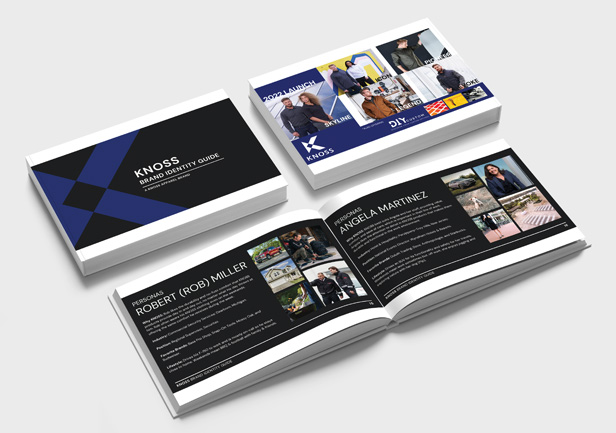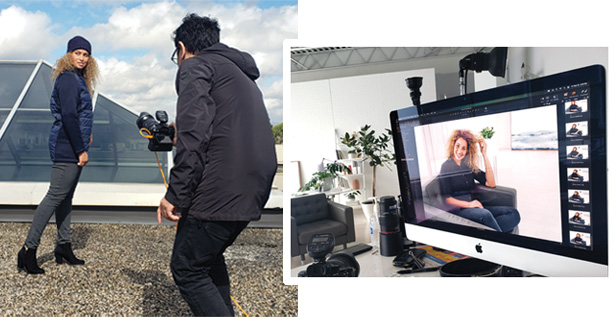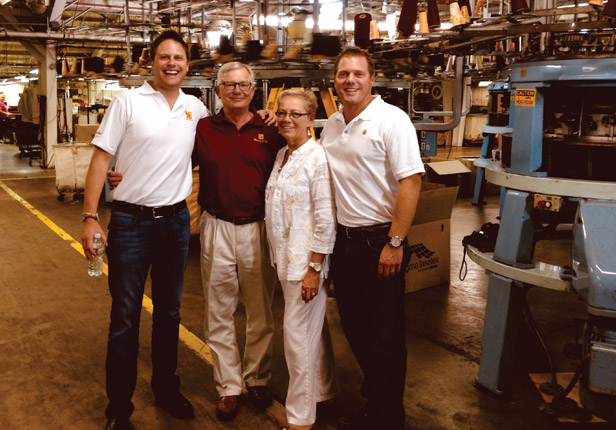January 13, 2022
Launching a New Apparel Brand
A Canadian veteran of the wholesale garment market recently helped a California supplier develop a new professional wear line for the promo industry. Here’s a behind-the-scenes look at how it was done.
Call it kismet, serendipity or just plain good luck, but everyone appreciates the times in life when the puzzle pieces easily fall into place. Elson Yeung can attest to that.
After several years in product development at Top 40 supplier alphabroder (asi/34063; Canada, 37143), Toronto-based designer and industry veteran Yeung was deep in consulting work for both suppliers and distributors, including branding and product design.
Then in early 2020, Yeung received a LinkedIn message from an apparel supplier. Eight years earlier, while working in design for former supplier Ash City, Yeung had presented in front of Vince Knoss of family-owned A+ Career Apparel & Image-Wear (asi/84835) in Burlingame, CA. Knoss had kept tabs on Yeung and wanted to collaborate on designs for a new clothing brand, which resulted in a three-month consulting contract.
“Brand identity is always the first thing to spend time on, not product.”Elson Yeung, KNOSS Apparel
For many years, A+ has operated mostly as a school uniform supplier, while dipping its toes in the professional apparel world. A full 90% of its business is in education with about 10% in career wear, and the Knosses, particularly Ryan Knoss who leads the division, have wanted to grow that number for the better part of a decade.
“I looked at their business and asked, ‘How come their career wear hasn’t taken off?’” says Yeung. “At the end of three months, I had a business proposal to help them grow. I found it was hard for them to capture career business because it was still considered an offshoot of a school uniform company. They had some things that were suitable for postal services and transportation, but nothing to really sink your teeth into.”
Yeung created an 18-month plan for the Knosses, which included action items for each month that would help them develop branding, marketing, a supply-chain network and sales strategy, and showed when to place an order and plans for a pre-launch. Then late last year, the Knosses asked Yeung himself to execute the plan and lead the growth of the career wear brand – something that Yeung agreed to after receiving full autonomy to build his team.
Now, with the new KNOSS Apparel brand officially launched, Yeung (the company’s president) peels back the curtain to reveal the steps that he, his team and the Knoss family took to bring a new apparel brand to a crowded industry.
1
ESTABLISH THE AESTHETIC

Yeung and Fariba Tashk, marketing and brand designer, collaborate on garment development. The Horizon men’s high loft fleece jacket (KN6001) is part of the KNOSS 360 collection.
As Yeung got a head start on building the brand’s supply-chain network in spring of 2021 (which turned out to be prescient considering current headaches), he discussed with company CEO Ryan Knoss what they wanted the new brand to be. “KNOSS Apparel is its own entity apart from A+,” says Yeung. “I asked them first, ‘What’s this going to be? What and who is the product and brand for?’ We needed to understand who we are. Brand identity is always the first thing to spend time on, not product.”
Yeung and the team decided the garments needed to be “purpose-built” for function, comfort and performance, for a variety of workers. “When people think ‘career wear,’ they usually picture white-collar employees,” says Yeung. “But blue-collar jobs require working with your hands. And people get to work in different ways, like public transport or by bike. We want everyone to have confidence and pride in what they’re wearing so they choose to wear it on weekends, even when they’re not on the clock.”
2
DEVELOP STYLE PERSONAS

Yeung led the development of style personas as a starting point for the new apparel collections.
Before designing products, Yeung and the team developed three style personas for target audiences, drilling down to details like what they do on weekends. “Rob Miller,” for example, lives in Dearborn, MI, is a regional supervisor at Securitas and drives a Ford F-150 pickup. On the weekends he grills, drinks Budweiser and watches football. He prefers Bass Pro Shops and Mossy Oak to Lululemon. “He travels between locations for work and has to look polished,” Yeung says.
Other personas include “Angela Martinez” from New Jersey, a national events director for a major resort chain who shows locations to potential customers and has to be on her toes on event days, and “Calvin Garcia,” a Canon technician who spends his days in and out of buildings doing repairs and heads to the pub on the weekends. “With these personas that represent target audiences,” says Yeung, “we could start creating the line.”
3
BUILD APPAREL COLLECTIONS

Before launch, it was crucial for KNOSS to have its visual assets in place, including model photography of the company’s five different collections.
With the target personas in mind, Yeung’s team built five collections, each with a polo, woven, fleece and jacket: Skyline, Icon, Legend, Pioneer and Evoke. Both Icon and Pioneer are part of KNOSS 360, a sub-brand of KNOSS, and are made of technical fabrics that stand up to more physical jobs. Legend is a crossover brand that’s ideal for new business owners, like distillers and brewers: It’s polished enough for meeting with investors, but also durable enough to head back to the facility to continue making product, says Yeung.
“We came up with 50 designs, but we needed to be smart as a startup,” he says. “We had to have deep enough inventory for what our industry needs so we could show that we’re a serious company and ready for programs. We brought it down to a still-respectful 24 designs, suitable for white- and blue-collar jobs, and we now have 110,000 units coming from overseas.”
4
ASSEMBLE A SOURCING NETWORK & CUSTOMER SERVICE

The Knoss family are long-time owners of A+ Career Apparel & Image-Wear. Founders Ken and Bernie Knoss (center) are flanked by their sons Vince Knoss (left), chief experience officer, and Ryan Knoss (right), president. Ryan is also the CEO of KNOSS Apparel.
Throughout the process, Yeung stayed in touch with his overseas sourcing network to get people and factories on board ahead of the initial launch. That way, when the designs were ready to be brought to fruition, the process could start quickly.
“I asked the Knosses for autonomy, and part of that was creating our own sourcing network,” says Yeung. “A+ sources mostly sweaters and school wear in youth and teen sizes. KNOSS Apparel now has a director of supply chain, and we source from Africa, China, Bangladesh and the Philippines – it’s very broad. We also have the backing to go deep with inventory.”
For now, customer service will be taken care of by three sales reps in the Bay Area of California, as well as Boston and Toronto, with plans to expand a formal customer service team. They’re also building out a sophisticated web platform for distributor clients.
“It’s all part of our five-year plan,” says Yeung. “We want to be a $50 million company.”
